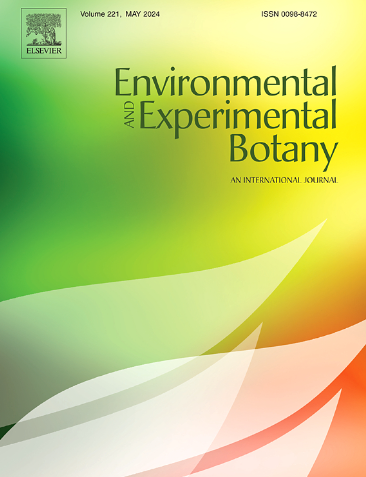Interplay among hormones, antioxidants, and redox signaling in abiotic stress responses
IF 4.5
2区 生物学
Q2 ENVIRONMENTAL SCIENCES
引用次数: 0
Abstract
Abiotic stresses are major limiting factors in plant development, delaying growth and reducing crop yield. These stressors induce the formation of reactive oxygen species (ROS), which can be harmful at high concentrations but also act as signaling molecules. Plants display robust antioxidative machinery to scavenge excess ROS and maintain nontoxic ROS levels. Plant hormones, specialized signaling molecules, are not only essential in plant growth and development, but also transducing stress signals, profoundly affecting the antioxidative machinery and triggering plant adaptive responses. In this context, respiratory burst oxidase homologous proteins are essential hubs that mediate phytohormone-induced ROS production, linking phytohormonal signals to important processes, such as stomatal closure. This review highlights the significant role of abscisic acid, jasmonic acid, salicylic acid, and brassinosteroids in enhancing antioxidative responses under abiotic stress conditions. Additionally, we emphasize the importance of redox post-translational modifications involved in hormone signaling.

非生物应激反应中激素、抗氧化剂和氧化还原信号的相互作用
非生物胁迫是制约植物发育、延缓生长和降低作物产量的主要因素。这些应激源诱导活性氧(ROS)的形成,活性氧在高浓度时是有害的,但也作为信号分子。植物显示出强大的抗氧化机制来清除多余的活性氧并维持无毒的活性氧水平。植物激素是一种特殊的信号分子,不仅是植物生长发育所必需的,而且还能传递胁迫信号,深刻影响植物的抗氧化机制,引发植物的适应性反应。在这种情况下,呼吸爆发氧化酶同源蛋白是介导植物激素诱导的ROS产生的重要枢纽,将植物激素信号与气孔关闭等重要过程联系起来。本文综述了脱落酸、茉莉酸、水杨酸和油菜素内酯在非生物胁迫条件下增强抗氧化反应中的重要作用。此外,我们强调氧化还原翻译后修饰参与激素信号传导的重要性。
本文章由计算机程序翻译,如有差异,请以英文原文为准。
求助全文
约1分钟内获得全文
求助全文
来源期刊

Environmental and Experimental Botany
环境科学-环境科学
CiteScore
9.30
自引率
5.30%
发文量
342
审稿时长
26 days
期刊介绍:
Environmental and Experimental Botany (EEB) publishes research papers on the physical, chemical, biological, molecular mechanisms and processes involved in the responses of plants to their environment.
In addition to research papers, the journal includes review articles. Submission is in agreement with the Editors-in-Chief.
The Journal also publishes special issues which are built by invited guest editors and are related to the main themes of EEB.
The areas covered by the Journal include:
(1) Responses of plants to heavy metals and pollutants
(2) Plant/water interactions (salinity, drought, flooding)
(3) Responses of plants to radiations ranging from UV-B to infrared
(4) Plant/atmosphere relations (ozone, CO2 , temperature)
(5) Global change impacts on plant ecophysiology
(6) Biotic interactions involving environmental factors.
 求助内容:
求助内容: 应助结果提醒方式:
应助结果提醒方式:


